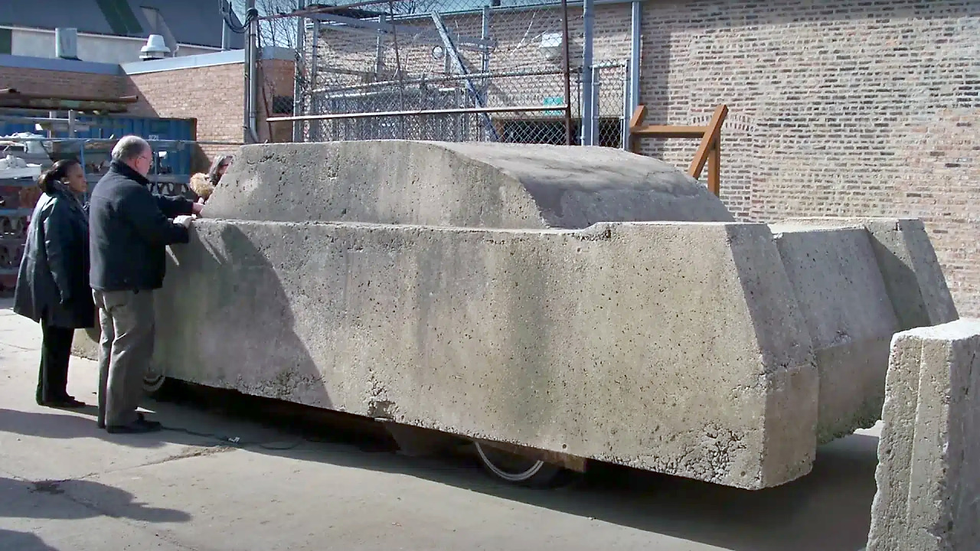1973 Lamborghini Urraco "Bob"
- Story Cars

- Feb 8, 2022
- 4 min read
The one-off Urraco Rally was constructed in 1973 by Lamborghini’s chief test driver and development engineer, Bob Wallace. It was the third and last of Wallace’s factory-sanctioned hot rods after the 1970 Jota and 1972 Jarama RS. The Rally was built from the third Urraco prototype which had its headlights mounted further up the front fenders than subsequent production derivatives. Wallace broadly created this experimental Lamborghini along the lines of a Group 4 GT racer, but it was never used in competition for a couple of reasons.
Firstly, Ferruccio Lamborghini was famously opposed to his cars being raced and refused to sanction a motor sport programme of any kind. Although he had sold 51% of Automobili Lamborghini to Georges-Henri Rossetti in 1972, there was no change in official company policy. Nor were their funds to spare as Rossetti made no significant cash injection to the firm.
Secondly, the Urraco had proven a commercial flop. Lamborghini had originally hoped to sell over 1000 examples every year. However, only once did the model manage to exceed even a quarter of that figure (in 1973 when 285 were built). Group 4 regulations required a minimum run of 500 production cars in twelve months, and Urraco for racing was out of the question. Nevertheless, this extensively modified hot rod served as a useful development tool for potential future upgrades.
The Urraco prototype’s pressed steel monocoque chassis was lightened wherever possible. The rear subframe was beefed up to cope with the extra power. Wallace then added a series of welded steel and aluminum inserts to reinforce. Wallace enhanced the independent MacPherson strut suspension with stiffer springs, uprated Koni dampers, and thicker anti-roll bars. Everything was made fully adjustable.
Bigger Girling ventilated brake discs were fitted with enormous new 15-inch diameter Campagnolo cast magnesium wheels. Unlike the production Urraco wheels that used five-bolt fixings, these latest rims were mounted on single center-locking hubs. Both Dunlop and Pirelli tires were variously trialed.
Although many characteristics of the Rally’s engine were never publicized, a few key details did leak out. Like the subsequent Urraco P300, the engine was stroked from 53mm to 64.5mm. This gave an additional 534cc and took overall displacement to 2997cc. Wallace had the car running an experimental four-valve cylinder head and installed a dry-sump lubrication system and a front-mounted oil cooler. Compression was almost certainly hiked beyond the original 10.5:1, and bigger Weber carburetors would have been fitted too. An output of 310bhp was often quoted, which was 90bhp more than the standard Urraco P250.
The Rally demonstrated that Paolo Stanzani’s original Tipo L240 all-alloy 90° V8 had real tuning potential. If the dual overhead camshafts fitted to the subsequent Urraco P300 had been utilized, over 350bhp would likely have been possible. Another important technical feature was the car’s six instead of five-speed gearbox. However, this addition proved false dawn; it wasn’t until the Murcielago arrived in 2001 that Lamborghini finally moved away from their traditional five-speed units.
Several dramatic changes were made to the exterior. The front bumper was removed, and bigger auxiliary lights were installed. An enormous front spoiler was added, which wrapped around the front wheel arches and housed an intake for the oil cooler. The lightweight front lid was given a lip spoiler at its trailing edge to improve airflow. A single windscreen wiper replaced the original twin wiper arrangement, and two body-colored wing mirrors were mounted on the front fenders. Down each flank, the door catches, and wraparound triple-vaned rear window slats were removed to save weight. Each rear wheel arch was cut away and then flared to accommodate the wide new wheels.
Plexiglas was used for the side and rear windows. The chrome window frames were replaced with anodized black metal. An enormous adjustable rear aerofoil was mounted on twin pylons over the boot lid at the back. The rear quarter bumpers were junked, and two un-silenced megaphone exhausts sprouted from the underside. Inside, every conceivable piece of superfluous trim was removed. While the original orange fabric passenger seat remained, a black vinyl bucket complete with racing harness was installed for the driver. A long-range fuel tank was positioned where the rear seats originally would have been, and a roll cage was also fitted. Weight was cut to ‘under 1100kg’, which would have given astonishing performance levels combined with the powerful new engine and six-speed gearbox. A top speed in the region of 170mph was likely possible, along with a 0-62mph time of under five seconds.
The car reputedly ran head-to-head with Porsche 911 RSRs at several Misano test sessions. Wallace claimed it proved more than a match for the defining normally aspirated GT racing car of the early-to-mid 1970s. When Ferruccio Lamborghini sold the remaining 49% of his company in 1974 (to Georges-Henri Rossetti’s friend, Rene Leimer), further development on the Urraco Rally was suspended. Disillusioned with the management situation, Wallace left Lamborghini that same year and relocated to Arizona, where he opened his own workshop.
Source: Supercar Nostalgia
Images: Lamborghini - https://www.lamborghini.com


































Comments